The Cold War: A MILITARY History (75 page)

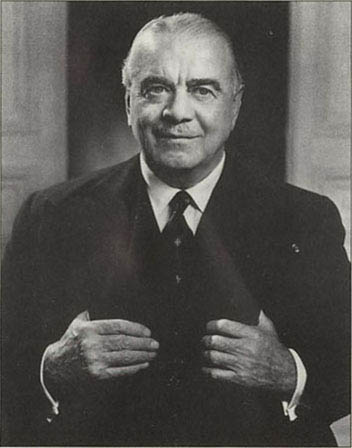
NATO’s first secretary-general was the British Lord Ismay. He made major contributions to the Alliance, helping to set up its structure and procedures, and overseeing the accession of Greece and Turkey in 1952 and of the Federal Republic of Germany in 1955. He retired from NATO in 1957
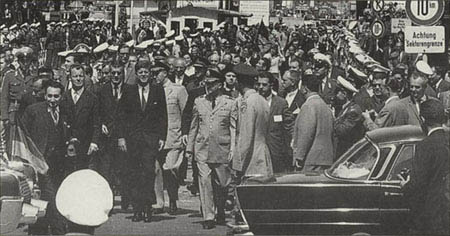
President John F. Kennedy’s significant and emotional visit to West Berlin in June 1963 symbolized United States commitment to NATO and to West Berlin. Here he returns from a visit to a Western checkpoint, with West Berlin’s governing mayor, Willy Brandt, second from his right
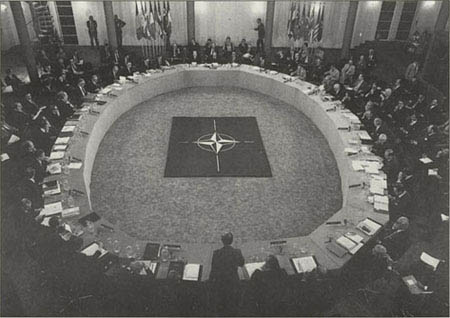
Much of NATO’s work took place in conference rooms, where the members made plans for the future, discussed common problems, and resolved the differences which arose from time to time. Here the North Atlantic Council meets in The Hague, the Netherlands, on 30 May 1979
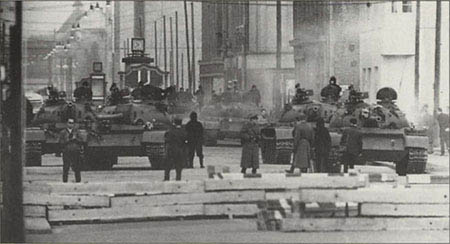
Some of the East–West confrontations took place in full view of the international media, which added to the danger of the situation. These Soviet T-55 tanks are taking up position facing Checkpoint Charlie in Berlin, in October 1961
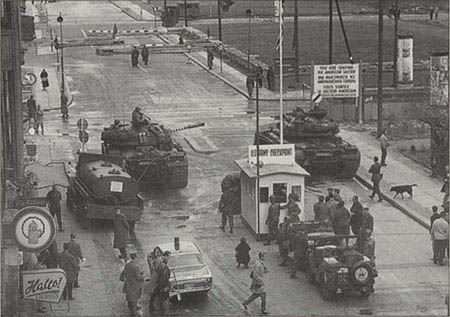
US tanks face the East at Checkpoint Charlie, also in October 1961. Such incidents appeared to be part of a ritual; however, they were very tense, and one false or unintentional move by either side could have seen rapid escalation to a conflict which neither side wanted
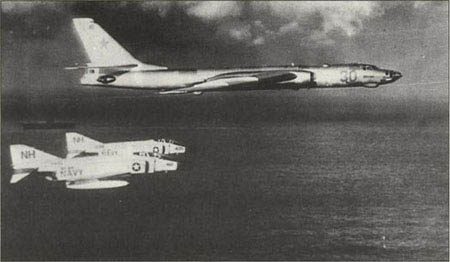
Confrontation in the skies as US navy Phantom fighters intercept a patrolling Soviet ‘Badger’ bomber. Such meetings took place daily throughout the Cold War; the rules were well understood, but occasionally they were broken and aircraft were shot down as a result
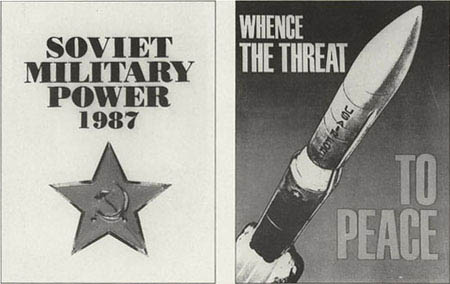
The Cold War was fought on many fronts, one of the most intense being the battle for people’s hearts and minds. A seemingly endless stream of documents appeared, of which these two are typical: the US
Soviet Military Power
and Moscow’s response,
Whence the Threat to Peace?

Public knowledge of Warsaw Pact capabilities was usually derived from carefully managed ‘photo opportunities’, which were designed to give the impression of awe-inspiring might. A typical example was this huge fleet of tanks, which was assembled after a major exercise
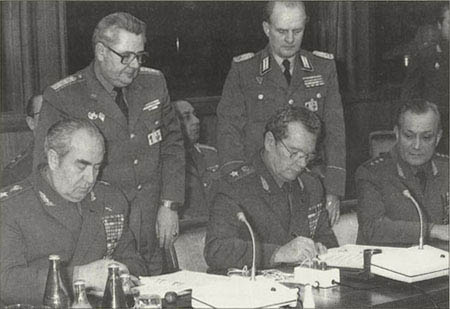
Marshal V.G. Kulikov (
centre, seated
) endorses the record of a meeting of Warsaw Pact defence ministers in December 1984. In all Warsaw Pact countries the defence ministers were army generals and, unlike NATO, the Pact was not headed by a civilian secretary-general
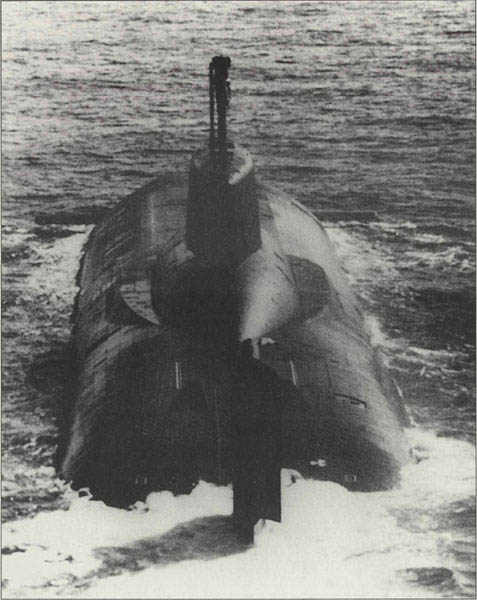
The Soviet Typhoon-class missile submarine was originally intended to lie under the Arctic ice cap for up to twelve months at a time, emerging only to launch its twenty long-range missiles in a ‘second strike’
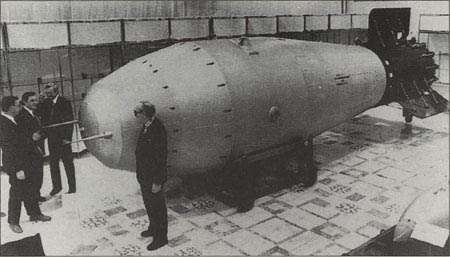
This huge Soviet bomb is thought to be the type used in the world’s largest known nuclear explosion. This involved a 58 MT weapon (equivalent to 58 million tons of TNT), and took place in an airburst at 3,700 m above the Novaya Zemlya test site on 30 October 1961
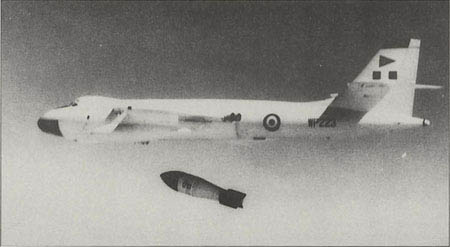
A Valiant V-bomber drops an inert version of the Blue Danube, the first British atomic weapon. Blue Danube entered service in November 1953 and, despite its large size, had a yield of only 20 kT – approximately the same as that of the bomb dropped on Nagasaki in 1945